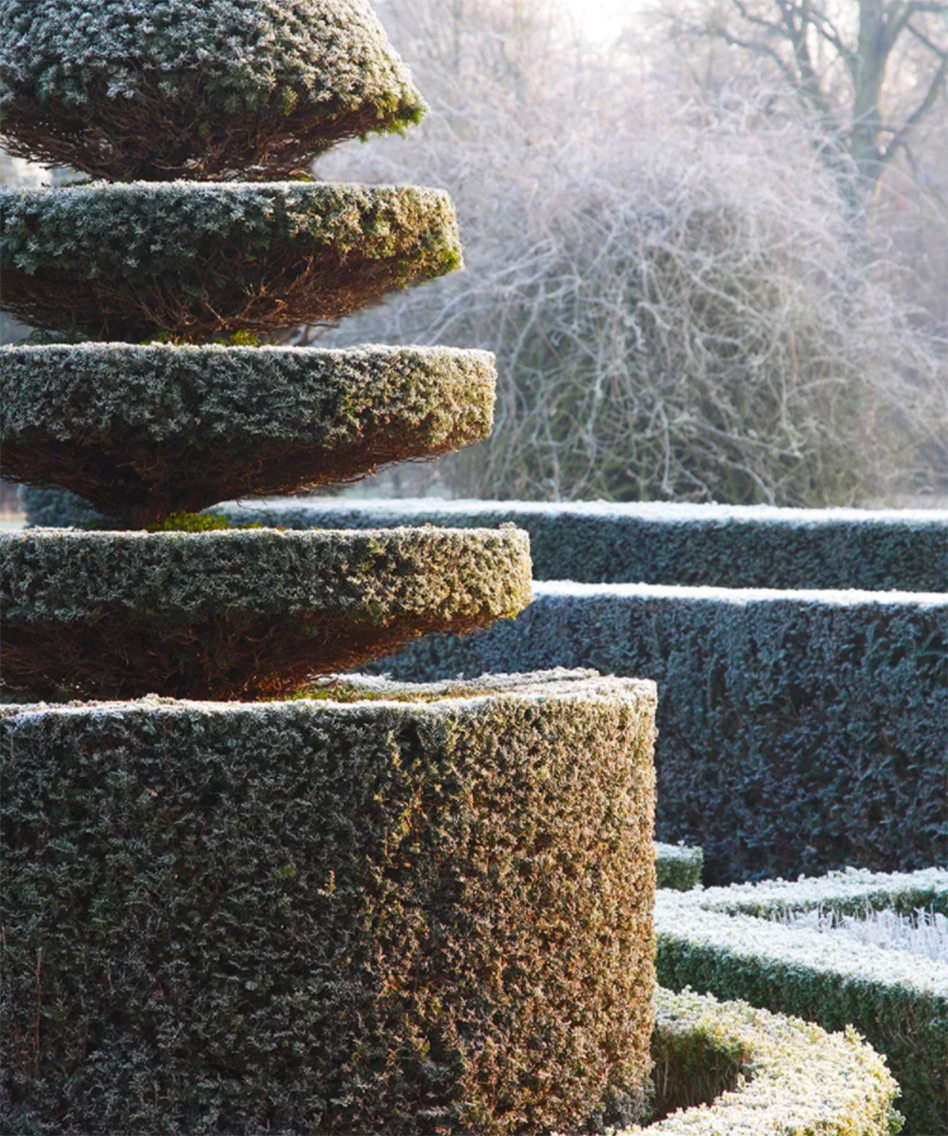Barefoot Contessa star Ina Garten's yard features an age-old gardening trick guaranteed to add year-round interest
Clipped evergreens can be used for a smart, contemporary look or as a contrast to a more naturalistic and romantic style of planting


Planning a front or backyard with year-round interest might sound a like dream for many, but this attractive, sculptural garden is proof that with a little patience and gardening know-how, achieving a low-maintenance topiary garden, full of haunting whimsy, isn't at all impossible. But what is topiary?
Topiary is the ancient practice of shearing evergreen shrubs and trees to beautify a garden. It encompasses the miniature box hedges that enclose flowers in elaborate parterres and the substantial yew hedging that forms mazes in the gardens of historic homes across the US. But most famously, it is the individual plants that are tightly clipped to form peacocks, pyramids, chess pieces, and other fantastical or geometric shapes.
Trimming plants into fantastic shapes dates back to the decadent days of ancient Rome. Clipped box, bay, and myrtle were frequently used in the gardens of the wealthy, with special gardeners being employed whose sole task was to create and maintain the topiaries. The word topiary derives from the Latin opus topiarium, which means ornamental gardening.
A post shared by Ina Garten (@inagarten)
A photo posted by on
A multi-tasking feature, topiary planting is perfect for creating a strong punctuation point in your planting scheme, and landscaping with evergreens can add structure, introduce low shapes, and add definition to garden paths, similar to Ina Garten's above.
‘Architectural plants undeniably add drama,’ says designer Kate Gould. ‘They work on all scales, from country estates to tiny town gardens. Their ability to transform a space, often simply by a single presence, is highlighted in small gardens, though, where their leaves add interest and shadow during the day and create oomph at night, especially when paired with lighting. Yew, buxus, and ilex are tough plants that can grow into large trees but are equally happy clipped into hedges or shapes. Their green forms add punctuation to lighter planting schemes and can be both traditional and contemporary in feel.’

If you want to recreate the look and appeal of Ina Garten's garden, then garden designers suggest you follow a few simple rules. Firstly, decide on the height and shape you want, and get clipping.
Secondly, choose shrubs with small leaves and thick dense foliage such as privet. The more you clip, the smaller the leaves become, making it a good choice for defining a sharp outline.
Design expertise in your inbox – from inspiring decorating ideas and beautiful celebrity homes to practical gardening advice and shopping round-ups.
Finally, make sure you choose the best time to prune topiary, such as when to trim boxwood bushes, to ensure you maintain healthy growth and a good shape and structure.
If you love the look of clipped evergreen shrubs, choose lollipop bay trees, smart box topiary balls, and pompom conifers as topiary ideas to add strong shapes that help to define your outdoor space.
A low-maintenance form of gardening, topiary looks good all year and can add a magical element when caught in a wintry frost.

Jennifer is the Digital Editor at Homes & Gardens, bringing years of interiors experience across the US and UK. She has worked with leading publications, blending expertise in PR, marketing, social media, commercial strategy, and e-commerce. Jennifer has covered every corner of the home – curating projects from top interior designers, sourcing celebrity properties, reviewing appliances, and delivering timely news. Now, she channels her digital skills into shaping the world’s leading interiors website.